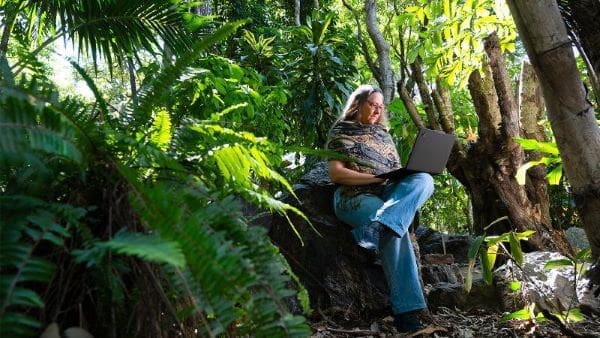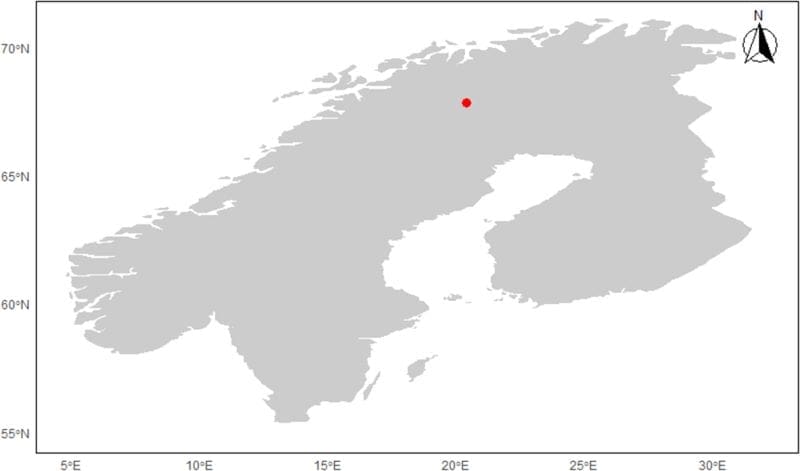Explore the latest insights from top science journals in the Muser Press roundup (November 28, 2025), featuring impactful research on climate change challenges.
In brief:
Farms could be our secret climate weapon, QUT-led study finds
Published in Plant Physiology, the paper lays out a framework to assess how plant agriculture and synthetic biology innovations can help mitigate climate change by cutting greenhouse gas emissions and increasing carbon storage.
Lead author Professor Claudia Vickers, from the QUT School of Biology and Environmental Science, Centre for Agriculture and the Bioeconomy, QUT Centre for Environment and Society, and the ARC Centre of Excellence in Synthetic Biology, said that while farming contributes substantially to global emissions, its vast footprint means even modest improvements in carbon capture or emissions reduction can deliver global-scale impact.

“Global croplands are estimated to capture more than 115 gigatonnes of carbon dioxide annually through photosynthesis,” she said.
“Even modest improvements in how crops capture, use, and store that carbon, if applied across existing farmland, could deliver huge climate benefits.”
The study introduces a quantitative framework to compare the potential of different strategies – from bioengineering crop traits to non-genetic approaches like biochar and reforestation.
Professor Vickers said the framework helps compare “apples with apples” by considering not just the carbon captured per hectare, but also scalability, durability, technical feasibility and socioeconomic fit.
The researchers found that reducing reliance on synthetic nitrogen fertilisers could have the most immediate, large-scale effects, each offering gigatonne-level potential for carbon mitigation.
In the longer term, synthetic biology approaches could collectively contribute up to 260 gigatonnes of carbon dioxide equivalent drawdown over the next century.
The analysis shows that while the amount of carbon captured per hectare varies greatly across strategies, the ultimate impact depends most on the scale of deployment, and according to the authors, no single intervention will be sufficient.
Instead, a portfolio of strategies is needed, combining mature solutions that can be deployed immediately with innovations still in development.
Professor Vickers said that successful interventions must be technically feasible, economically viable, durable, and scalable, while ensuring minimal harm to ecosystems.
“Improving agricultural carbon sequestration also helps deliver to food, feed and fibre priorities, along with farmer income and security. This makes these solutions triple bottom line solutions – addressing social, environmental, and economic outcomes,” she said.
“Agriculture is uniquely positioned to both feed the world and fight climate change. But we need to focus on the interventions that can deliver meaningful, measurable outcomes. Our work provides a roadmap to do just that.”
Journal Reference:
Claudia E Vickers, Philipp Zerbe, ‘Harnessing plant agriculture to mitigate climate change: A framework to evaluate synthetic biology (and other) interventions’, Plant Physiology 199, 3: kiaf410 (2025). DOI: 10.1093/plphys/kiaf410
Article Source:
Press Release/Material by Queensland University of Technology (QUT)
Researchers warn: Climate change could expand habitats for malaria mosquitoes
An insistent buzzing at sunset followed by itchy, spotted legs. In Denmark, mosquitoes are mostly an annoying – but generally harmless – nuisance. That is far from the case in many parts of the world.
Every year, around 600,000 people die from malaria, a mosquito-borne disease – most of them in sub-Saharan Africa, and children are the most vulnerable. This makes malaria one of the deadliest infectious diseases globally.
A new study from the University of Copenhagen, published in Global Change Biology, shows that future climate change could create more favourable conditions for malaria mosquitoes, exposing millions of people across large parts of Africa to more dangerous mosquito bites.
“Our study indicates that climate change will benefit these malaria mosquitoes. This could put between 200 million and up to one billion people at additional risk – unless we act,” says lead author Tiem van der Deure, a PhD student at the Department of Veterinary and Animal Sciences at the University of Copenhagen.
“The 200 million figure is a very conservative estimate assuming no demographic changes, but accounting for climate change. The one billion scenario includes significant population growth,” he explains.
If new areas become exposed to malaria, the consequences could be severe, as populations in these regions will lack experience in managing the disease and have very low immunity.

Different mosquitoes react differently
Because malaria is such a major problem in Africa, researchers have long studied how climate change affects the parasites mosquitoes transmit to humans. While climate change influences malaria in many ways – making the overall picture complex – this study shows that future climate conditions could favour several mosquito species capable of carrying malaria across much of Africa.
The researchers examined how six of the most widespread malaria mosquito species will respond to climate change.
“To most people, mosquitoes look alike. But they differ greatly – even if we sometimes can’t tell them apart with the naked eye. Their behaviour and preferred environments vary significantly,” says Associate Professor Anna-Sofie Stensgaard from the Department of Veterinary and Animal Sciences at the University of Copenhagen and senior author of the study.
The team trained algorithms on thousands of mosquito observations and then used these models to predict where climate conditions will be suitable for different species – and how these conditions will shift as the climate changes.
“Of the six species we studied, three are projected to expand, while the other three do not decline significantly. Overall, this is a worrying trend,” says Tiem van der Deure.
Mosquito habitats are expected to grow especially in East and Central Africa, while conditions in West Africa will remain favourable.
Action is possible
Despite the grim outlook, something can be done, stresses Tiem van der Deure. “Our climate scenarios show that we can prevent much of this by limiting climate change. We examined one scenario where we continue as usual, and another where we meet the Paris Agreement targets,” he says.
“This study is a stark reminder that failing to meet the Paris Agreement targets is not just about rising seas or extreme weather – it’s also a public health crisis in the making,” adds Professor David Nogués Bravo from the Center for Macroecology, Evolution and Climate at the University of Copenhagen and coauthor of the study.
No threat to Northern Europe
According to the study, global health authorities must prepare for malaria to spread. With climate change, we can no longer assume mosquitoes will stay where they are, which could lead to outbreaks in new regions.
Even though Northern Europe is also getting warmer, there is no need for concern here, emphasizes Anna-Sofie Stensgaard. “Malaria existed in Denmark in the past when the climate was much colder, and we still have malaria mosquitoes. But it remains too cold for the parasite to thrive. So malaria is not one of the mosquito-borne diseases I worry about reaching Denmark anytime soon. It’s also important to note that climate change is only part of the explanation for shifting disease patterns. Globalization, international trade, and land-use changes play at least as big a role,” she says.
According to Denmark’s Statens Serum Institut, around 80–100 malaria cases are imported to Denmark each year.
Journal Reference:
van der Deure, T., D. Nogués-Bravo, L. L. Njotto, and A.-S. Stensgaard, ‘Climate Change Favors African Malaria Vector Mosquitoes’, Global Change Biology 31, 11: e70610 (2025). DOI: 10.1111/gcb.70610
Article Source:
Press Release/Material by University of Copenhagen (KU)
Old air samples hint at effects of climate change
When the Swedish military began collecting air samples in the 1960s to register radioactive fallout from nuclear weapons testing, it is highly unlikely that anyone was thinking about moss. However, the glass fibre filters on which the samples were saved also captured something completely unintended – namely DNA from pollen, spores and other biological particles. This discovery was made by researcher Per Stenberg of Umeå University.

“The samples have proved to be an unexpected, unique and very exciting archive of DNA from wind-dispersed biological particles,” says Nils Cronberg, researcher in botany at Lund University.
The researchers have studied how the dispersal period of airborne moss spores has changed over a 35-year period for 16 different moss species and groups. The results, published in Journal of Ecology, in show that on average the spore dispersal of the mosses starts four weeks earlier and culminates six weeks earlier than in 1990.
“It’s a considerable difference, especially considering that summer is so short in the north,” says Cronberg.
Warmer autumns mean that the mosses’ spore capsules have a longer time to develop before the onset of winter – a biological kick-start that enables the spores to be released earlier in the spring. But perhaps what is most surprising is that it is not the current spring weather that controls the timing of spore dispersal.
“We had expected that snow thaw or air temperature in the same year as spore dispersal would be crucial, but climate conditions the year before were shown to be the most important factor,” says Fia Bengtsson, formerly a researcher in botany at Lund University, who is now at the Norwegian Institute for Nature Research.
In addition to showing how fast climate change affects ecosystems, the study paves the way for a completely new method for understanding biological changes over time. The same type of DNA analysis can also be conducted for other plant and animal groups. As the collection points are all over Sweden, the researchers can follow developments back in time through the decades – from north to south.
“We anticipate that our results and knowledge about how nature has changed from the 1970s onwards will be part of the next report by the Intergovernmental Panel on Climate Change (IPCC) on the documented effects of climate change,” concludes Cronberg.
Journal Reference:
Bengtsson, F., Cronberg, N., Lozano Villegas, J. A., Siddique, A. B., Stenberg, P., & Ekroos, J., ‘Rapid shifts in bryophyte phenology revealed by airborne eDNA’, Journal of Ecology online ver., 1–15 (2025). DOI: 10.1111/1365-2745.70180
Article Source:
Press Release/Material by Lund University
Over half of global coastal settlements are retreating inland due to intensifying climate risks
For centuries, coastlines have attracted dense human settlement and economic activity. Today, more than 40 percent of the global population lives within 100 kilometers of the coast, where facing accelerating sea-level rise, coastal erosion, flooding, and tropical cyclones.
Although moving away from the coast – known as “retreat” – is often viewed as an adaptive strategy, its global extent and drivers have remained unclear. A new study published in Nature Climate Change fills this gap by providing the first global evidence that coastal retreat is driven more by social and infrastructural vulnerability than by historical exposure to hazards.
The study was conducted by an international team led by researchers from Sichuan University and included remote sensing experts from the University of Copenhagen (Alexander Prishchepov and Shengping Ding, IGN). It maps settlement movements across 1,071 coastal regions in 155 countries. By integrating nighttime light observations with global socioeconomic datasets, the researchers found that 56% of coastal regions have retreated from the coast from 1992 to 2019, and 16% of regions, including the Copenhagen area in Denmark, have moved closer to the coast, while 28% have remained stable.

A growing but uneven global shift
“More than half of the world’s coastal regions are moving away from the shoreline, with Africa (67%) and Oceania (59%) leading the retreat. However, in parts of Asia and South America, many communities continue to expand toward the coast” explains coauthor Dr. Shengping Ding, who just defended his PhD thesis on a topic relevant to the article at the Department of Geosciences and Natural Resource Management at the University of Copenhagen.
The study highlights a significant adaptation gap: nearly half of low-income regions – especially in Africa and Asia – are unable to retreat, often due to the pursuit of socioeconomic improvement, reliance on coastal land and lack of alternative resources. This leaves millions more exposed to coastal flooding and erosion.
Interestingly, retreat is most common in middle-income countries. Researchers say these nations sit at a tipping point: they possess enough institutional capacity and financial resources to support relocation, yet have not reached the level of wealth where they can rely solely on protective infrastructure.
Meanwhile, both low- and high-income regions tend to stay near or move even closer to the coast – though for very different reasons. Poorer regions often expand shoreline settlements in search of livelihoods, infrastructure access, and economic opportunity. In contrast, wealthier regions may feel confident in their ability to manage climate risks, relying on advanced infrastructure, early warning systems and coastal defenses.
Vulnerability, not past experience, mainly drive coastal retreat
Recently, the increased risk of floods and resulting damages to coastal settlements has sparked debate in Denmark, with critics accusing politicians of delaying promised policies that would protect property owners from damages.
Despite this, Denmark , exemplified by the capital region of Copenhagen, is amongst the minority of regions moving closer to the coast these past decades, the research shows.
“Compared to poorer regions, Denmark has strong infrastructure and greater capacity to adapt to rising coastal risk. Danes also tend to trust that policymakers will do what is necessary to protect vulnerable coastlines. Places like Copenhagen and Aarhus historically served as major trade and industrial coastal cities. However, trust alone may not be enough, with documented erosion in parts of Denmark, proactive inland planning and resilience measures are becoming increasingly important,” says coauthor Associate Professor Alexander V. Prishchepov, Department of Geosciences and Natural Resource Management, University of Copenhagen.
Interestingly, it is not the frequency of past disasters in a region that mainly drives coastal retreat, the study shows. Instead, it is the current vulnerability to coastal hazards which accelerates it – particularly where infrastructure protection is limited and adaptive capacity (social, economic and political means) is low.
“Our analysis shows that coastal retreat mostly happens a response to low protection and weak adaptive capacity in places where communities don’t have the means to protect themselves. Such regions tend to experience faster retreat, not necessarily because of more hazards, but because they lack the capacity to stay,” adds Shengping Ding.
The study used the method “mixed-effects modelling” – a statistical tool that enhances the analysis of complex data structures by incorporating both fixed and random effects. This approach demonstrated that a 1% improvement in a region’s adaptive capacity resulted in a 4.2% reduction in retreat speed, and a 1% increase in structural protection led to a 6.4% reduction.
Lessons for global coastal adaptation
Alexander V. Prishchepov highlights that the study provides valuable lessons for climate adaptation worldwide, including in Denmark, where land reclamation and coastal development are extensive.
“Our research shows that vulnerability, not just hazard exposure, determines whether communities adapt proactively or are forced to retreat reactively. For countries like Denmark, where coastal expansion continues, understanding these global dynamics is crucial for policymakers to avoid future maladaptation,” says Prishchepov. “Globally, we must shift from reactive retreat to proactive planning, integrating social vulnerability into long-term coastal management.”
He also points out the importance of further research.
“Though this research offers valuable insight into global migration patterns, more study is needed to fully understand them. Particularly in socially-fragile regions such as African countries, night-time light data may not tell the whole story, as economic activity and settlements extent are not necessarily linked to luminous activity in regions with limited electrification,” says Prishchepov.
Journal Reference:
Xu, L., Yang, X., Chen, D. et al., ‘Global coastal human settlement retreat driven by vulnerability to coastal climate hazards’, Nature Climate Change 15, 1060–1070 (2025). DOI: 10.1038/s41558-025-02435-6
Article Source:
Press Release/Material by University of Copenhagen (KU)
Featured image credit: Gerd Altmann | Pixabay




